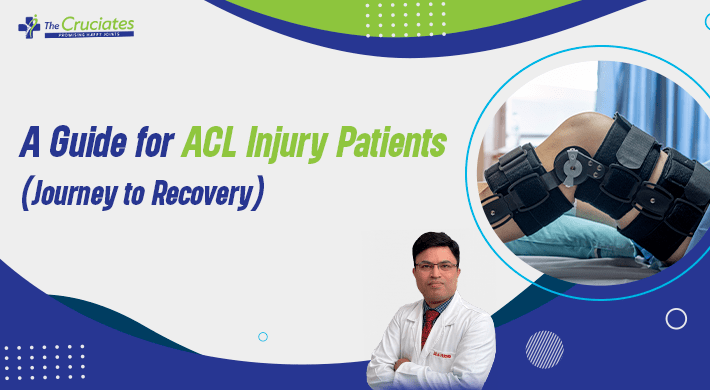Anterior cruciate ligament (ACL) injuries are common among athletes, especially those involved in noncontact sports like basketball and skiing. An ACL injury can be incredibly painful, but it doesn’t have to
sideline you permanently. Here are tips on how to treat an ACL injury, when to return to play and more
from the India’s one of the leading orthopedic and sports surgeons at “The Cruciates – Centre of
Excellence for all Sports Injuries” at Medharbour Hospital, Gurgaon.
Table of Contents
What is an ACL injury?
An anterior cruciate ligament (ACL) injury, is an injury in which the ligament in the knee is torn or
injured. This typically occurs when someone pivots from one leg and crashes into something with the
other leg – leading to a tear. This is the most common ligament of knee to be injured. ACL injury can be
partial or complete tear of the ligament. With a complete tear, there will be swelling that forms almost
immediately after the injury and the knee will appear very unstable.
The classic history of an ACL injury
My personal experience with the ACL
The anatomy and physiology of the knee

1) Anteromedial bundle – it becomes tight during knee flexion and prevents anterior (Front)
translation of tibia (shin bone).
2) Posterolateral bundle – it becomes tight during knee extension and is primarily responsible for
rotational stability.
Deciding whether to have surgery or not
Nonoperative treatment
Indications of ACL reconstruction Surgery
Younger, more active patients (reduces the incidence of meniscal or chondral injury)
• Children (activity limitation is not realistic)
• Older active patients (age >40 is not a contraindication if high demand athlete)
• Partial/single bundle tears with clinical and functional instability
• Prior ACL reconstruction failure
• High grade pivot test positive
How do I recover from an ACL injury?
Can I return to competitive sports after an ACL reconstruction?
Where can I find support while recovering from my surgery?
First contact your sports injury surgeon to understand nature of injury. If you are suffering from low
grade partial ACL tear, you may not need surgery. So, you should take an expert opinion immediately
after injury to decide treatment modality.
One of the best ways you can help yourself recover from an ACL injury is by learning as much as possible
about the injury and what your options are. There are a lot of online resources available, as well as
expert opinion, in forums and articles like this one. You can also find a lot of information about how
people have recovered through social media sites like Facebook or YouTube. You can also send your
reports to us for free expert opinion.
Also Read : The Five Most Common Reasons for Sports Injuries

